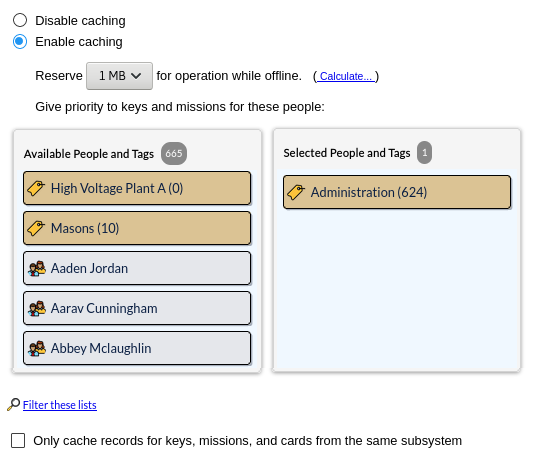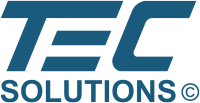 Flex Hub Caching (Flex 1 system)
Flex Hub Caching (Flex 1 system)

Note: - This article describes caching for the original Flex 1 system. Caching for the Flex II system is described here.
Flex System Hubs will store both door and CyberKey configuration records in their memory. CyberKey records include CyberKeys issued to people and for missions. This allows the Flex System hub to grant access to a door or to program the CyberKey with its set of expiration and access permissions regardless of whether CyberAudit-Web is available on the network. These "cached" records enable the Flex System Hub to respond to requests very quickly. If a record to program a CyberKey is not stored locally, the Flex Hub will contact CyberAudit-Web for instructions. If caching is disabled, access to doors is also disabled with the original Flex 1 system.
By default CyberAudit-Web tries to cache all possible keys and missions in each Flex Hub plus all access records for any doors it controls. Door access permissions are prioritized when caching because they require relatively little memory. However a maximum of 1275 distinct CyberKey and mission configurations may be stored in a Flex System Hub. The number of individual CyberKeys and mission numbers can be increased when the CyberKeys and missions share templates because each template requires the same storage as a single CyberKey configuration.
The Flex Hub still reserves 1MB of space to store audit trail data plus the data downloaded from CyberKeys. This represents approximately 36 downloads of keys with 4000 audit events each. A drop-down chooser may be used to increase the 1MB reserve to 2, 3, or 4MB. A calculator is available to assist with a suggested reserve.
While a Flex System hub can continue to operate for a period of time without contacting CyberAudit-Web, the Flex System was not designed to operate this way indefinitely. It must eventually contact CyberAudit-Web to upload its data, free its memory, and synchronize with any new instructions.
If the number of People with door access or keys or missions to cache will exceed the memory of the Flex System hub an item chooser may be used to give priority to selected People and People Tags. In addition mission and key records may be restricted to those in the same subsystem as the Flex Hub.
Finally if no doors are connected to the Flex System Hub, caching may be disabled completely to force the Flex System hub to contact CyberAudit-Web for each requested CyberKey update.

